
Porto, Portugal

3- Growth of Salt Domes (cont.)
3.11.5- Allochthonous salt and Extension
The sketch illustrated in fig. 133, shows one of the possible mechanisms of emplacement of allochthonous salt. In this hypothesis several steps are considered:
a) Extrusive Salt Wall.
b) Growth Faulting:
- The extension created by the fault heave of a growth-fault is balanced by shrinking of the stem of the salt wall.
- The shortening due to reduction of the stem induces the salt to flow up-dip and down-dip forming a salt tongue.
- As the shortening of the stem balances the lengthening, due to the fault heave, there is no extension.
c) Salt Welding
-With the continuation of the growth-fault displacement the shrinking of the salt wall stem is complete. The salt tongue will be disconnected from the mother salt layer and the stem will become a salt weld.
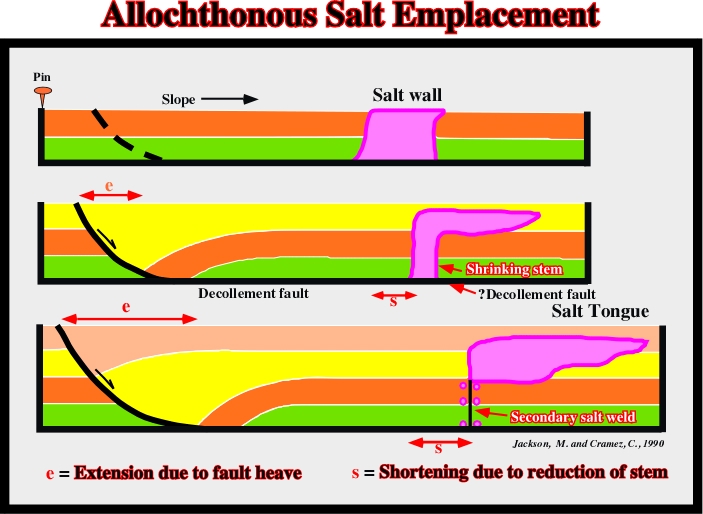
When the extension induced by the growth-fault displacement cannot be balanced by shrinking of the stem, there is a local sedimentary lengthening.
The following figures (fig. 134 & 135) illustrate the principal mechanics invoked to explain salt intrusions.

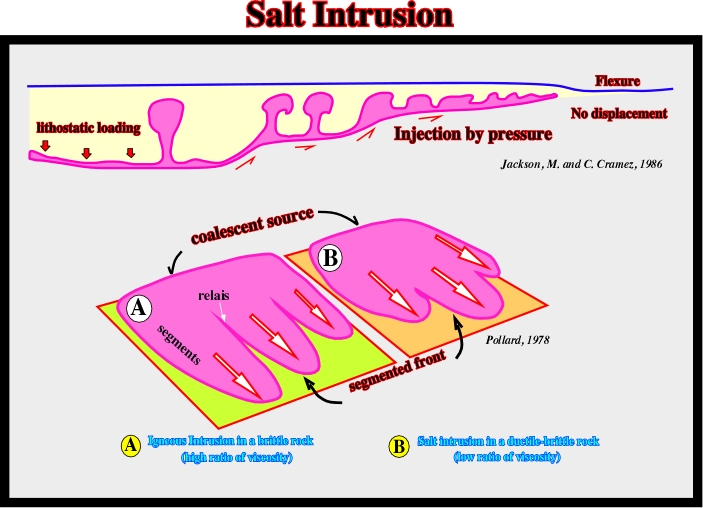
Fig. 135- In the ground or in a time slice, it is often possible to observe the frontal morphology of the salt intrusions proposed by Pollard for the igneous intrusions as illustrated above.
Allochthonous salt is found in the majority of the salt basins such as Gulf of Mexico, offshore Angola, Offshore Brazil, etc. In these basins, as illustrated in fig. 136, the allochthonous salt seems to evolve basinward. Indeed, seaward, the predominant salt structures seem to be:
(i) Salt stocks
(ii) Salt canopies
(iii) Salt nappes or Salt sheets.

Petroleum explorationists working in Gulf of Mexico know how important is concept of allochthonous salt for petroleum exploration. Two perpendicular regional seismic lines, located in fig. 137, showing large reactivated allochthonous salt sheets are illustrated fig. 138 and 139.
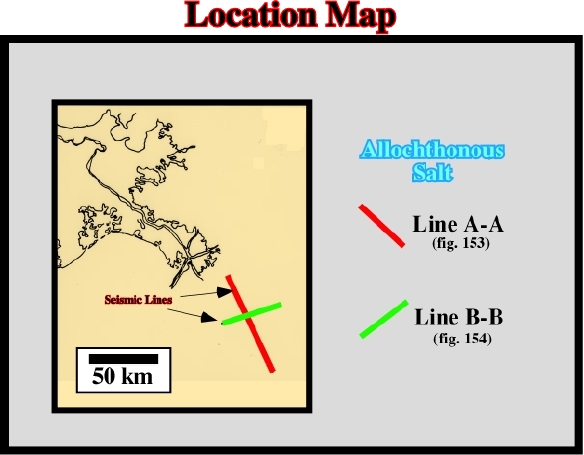
Fig. 137- The perpendicular seismic lines illustrated in fig. 138 and 139 are located seaward of the present time Mississippi mouth.
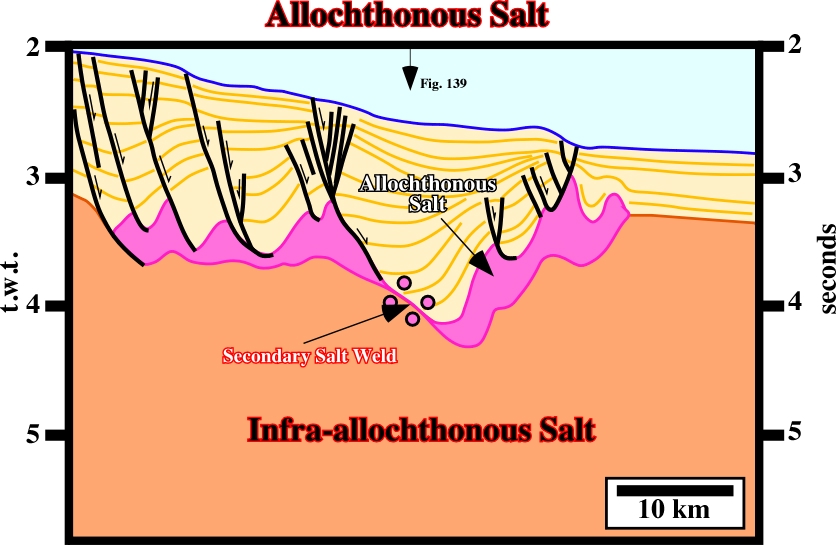
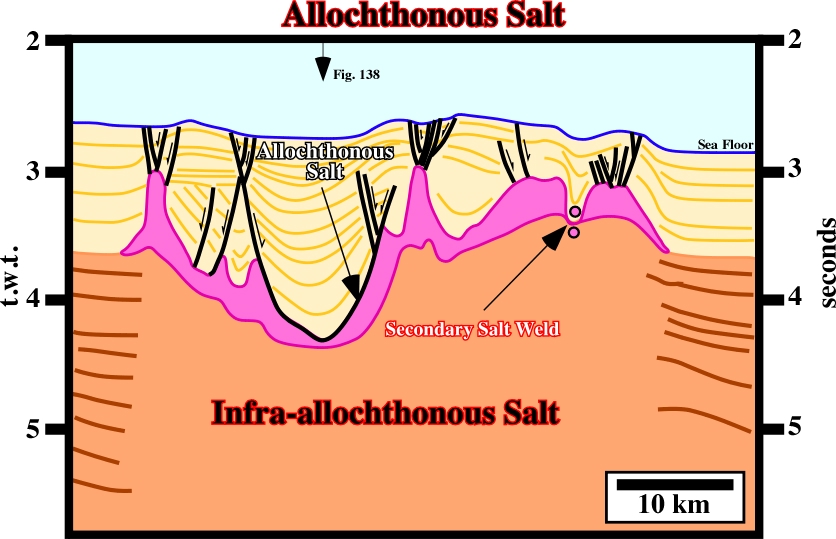
Fig. 139- On a strike line (see intersection with the line of fig. 138), the transverse geological section of the reactivated salt tongue is clearly depicted. The down-dip salt flowage, within the salt tongue, created a large depocenter, which strongly contrasts with the “normal” stratigraphy recognized outside of the tongue on the ends of the line.
to continue press
next
Send E-mails to ccramez@compuserve.com or cramez@ufp.pt with questions or comments about these notes.
Copyright © 2001 CCramez
Last modification:
Março 19, 2006